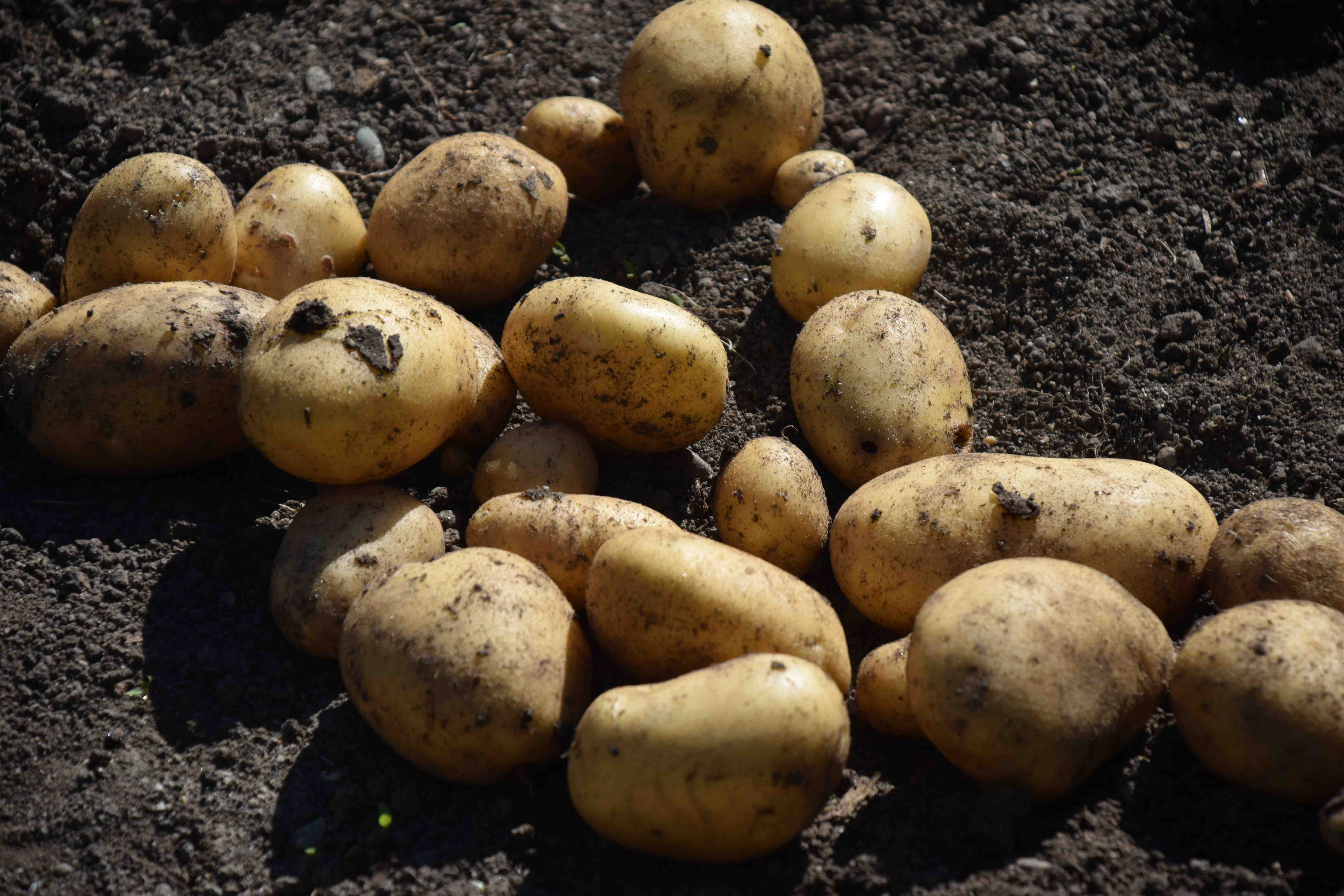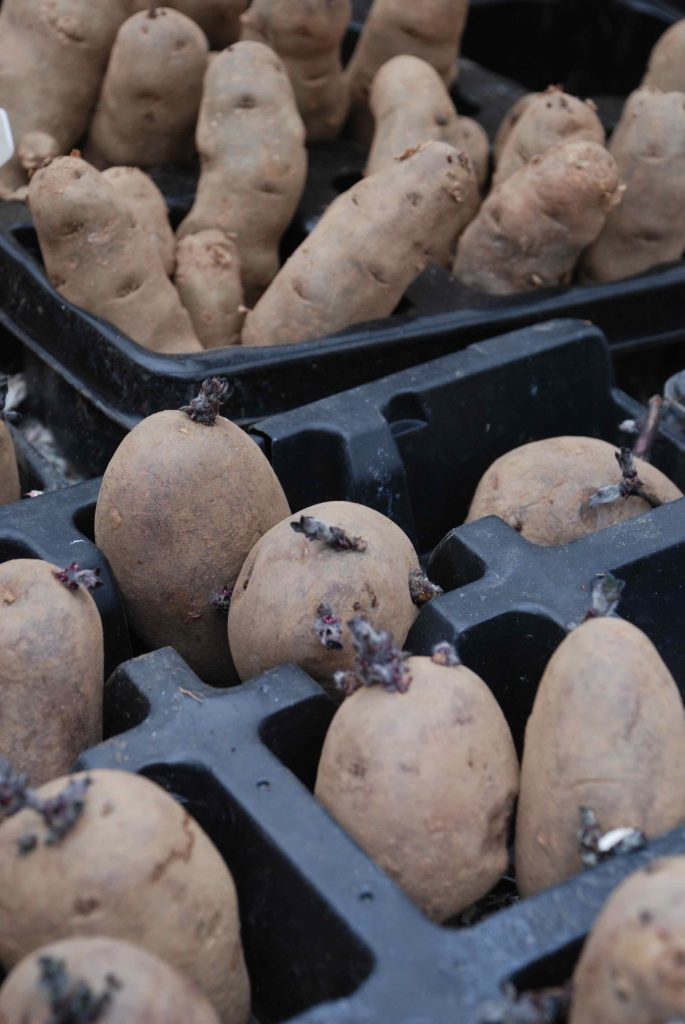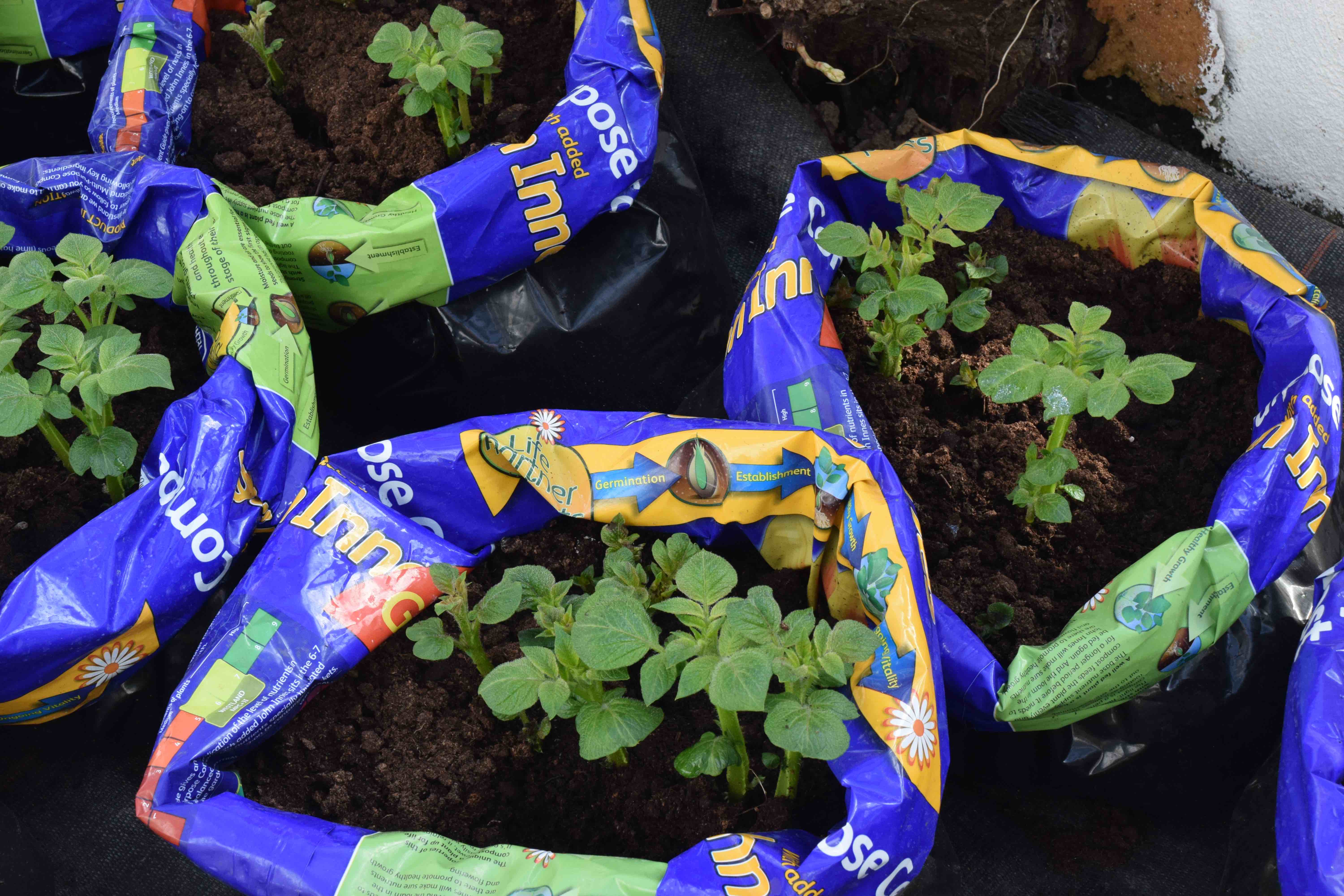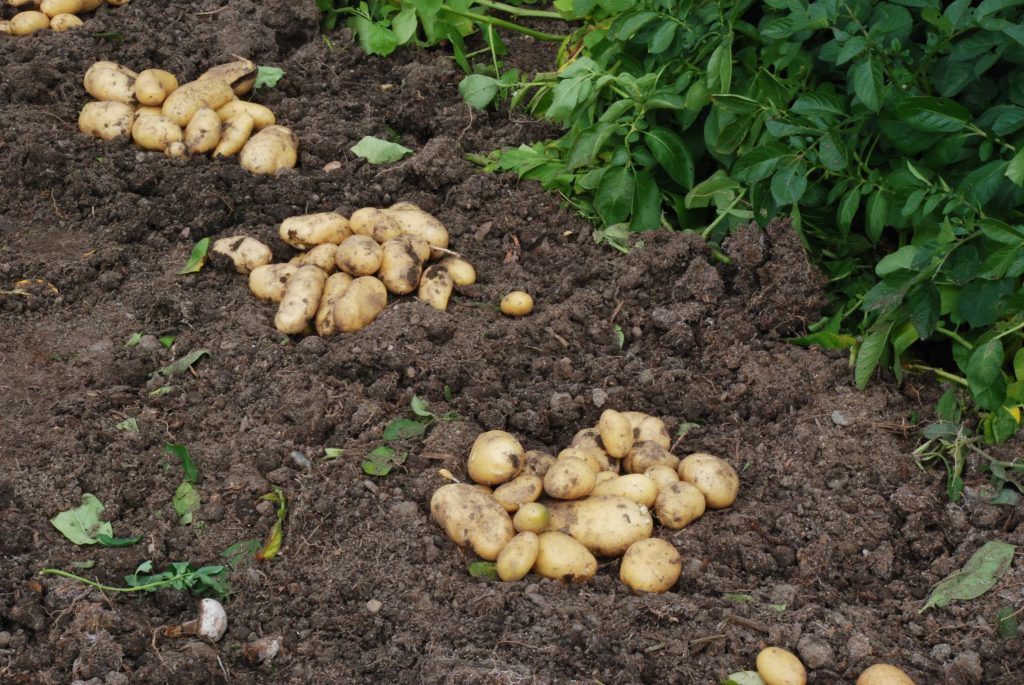
Whether you think potatoes should be planted on Good Friday or, as in Ireland, St Patrick’s Day, it is time to get potatoes in the ground. Few of us have enough room to grow all the potatoes we need. They take up a lot of room and they are also a lot of work – involving lots of digging. It is because of this that they are often recommended as ‘cleaning’ the soil – they don’t have magic properties but the acts of planting and digging them, as well as the weed-smothering foliage, work together to help get rid of weeds.
You have probably bought your tubers by now and they should be sprouted before they are planted – just put them, eye-end upwards, in a light, warm place – the kitchen windowsill is fine. If you need to, buy them now.
Don’t forget BST starts this morning!

Never plant potatoes bought for eating – they can be infected with diseases that you don’t want to introduce into your garden.
When it comes to choosing, you can select from ‘earlier’, ‘second earlies’ and ‘main crop’. They can all be planted at the same time and the earliest will be ready to harvest first, in July, the second-earlier a few weeks after and the matincrops from September onwards. In general, the tubers will be ready to dig once the plants have flowered.
There are so many different kinds of potatoes now and the old choice of reds or whites is far too simple, especially as you can now get them with purple or red flesh as well as various skin colours. The texture of potatoes also varies and I prefer waxy potatoes, perfect for salads. The Irish prefer floury potatoes, mainly, I think, to soak up as much butter as possible, and the most popular of all is the old ‘British Queen’. This was bred in Scotland in 1894 and was popular in England until after the second World War. It is not common in England now but every roadside stall in Ireland sells them in July, advertised as ‘balls of flour’.
Salad potatoes are often main crop varieties, maturing late, well after I want to eat salads so waxy early varieties are perfect for summer salads.
Potatoes are not fussy about soil but are best in acid soils. There are numerous problems but none need be an issue except for potato blight, which can ruin the crop. At its worst in hot, humid weather in late July and August, you can avoid the problem completely (usually) but growing earlies and second earlies which are harvested before blight season.
Even if you don’t have a garden you can grow potatoes in bags. I use old compost bags, rolled down with some holes stabbed in the base. Put 15cm (6in) of compost in the base, plant two or three potatoes and cover with some compost. Water and keep in a frost-free place. They do not need light until the shoots appear.

When the shoots are about 15cm high, add more compost to part-cover the stems, leaving the tips of the shoots uncovered. As the shoots grow, repeat several times, unrolling the bag. Keep the bags in a bright spot. You can put them outside by be prepared to move them undercover on frosty nights. Keep the bags watered and give liquid fertiliser to keep them growing strongly. As soon as the plants start to bloom you can push your hand into the bag to see if there are any tubers ready to harvest. The advantage of this method is that you can get an extra early crop and the potatoes will be clean and easy to prepare.

Jobs for the week
Feed the lawn with a granular fertiliser, using a feed and weed product if necessary.
Sow half hardy annuals like cosmos in the greenhouse or on the windowsill. You can sow hardy annuals outside where they will grow if the weather is warm.
Sow broad beans where they are to crop now.
Plant up any empty pots for some Easter colour. Primroses and pansies are ideal and will withstand frosts. Brilliantly coloured Senetti are perfect for real impact on the patio and will also tolerate light frost. They will keep your patio colourful until you can plant your summer bedding plants.